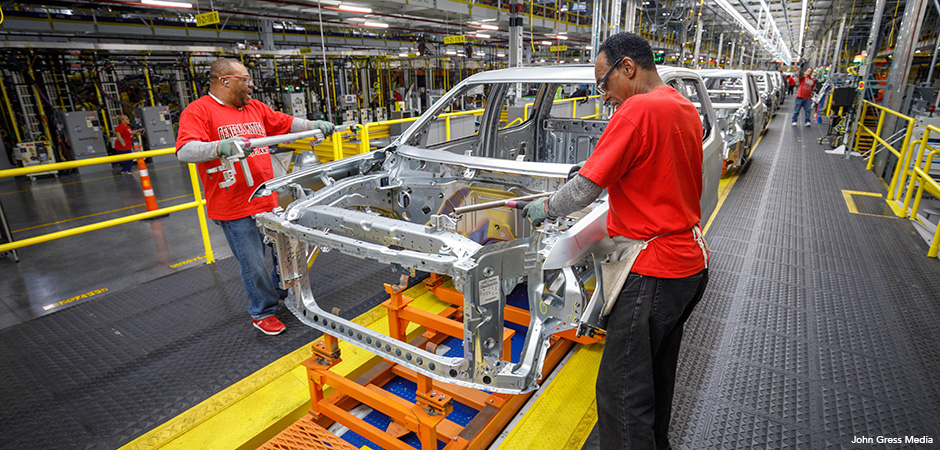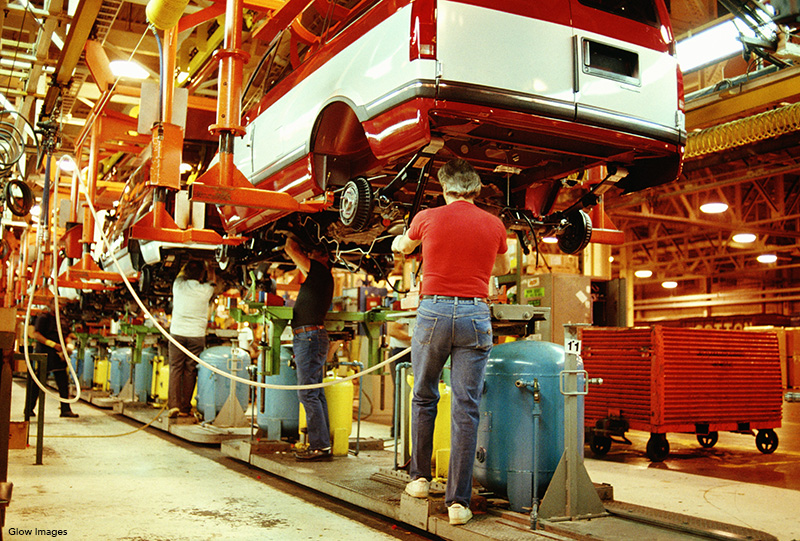
Members of the United Auto Workers (UAW) labor union went back to work on October 30, 2023. Since September 15, they had been on a historic strike against the “Big Three” U.S. automakers: Ford Motor Company, General Motors (GM), and Stellantis (formerly Chrysler). It was the first time the UAW had gone on strike at all three companies at the same time. (A strike is a refusal to work until the company meets the labor union’s demands.) At the end of October, national UAW representatives tentatively approved new labor contracts with the auto companies. Local UAW leaders and workers must also approve the contracts, however. While local voting takes place, the strikers agreed to go back to work.
Why Did the Strike Happen?
The previous UAW contract with the Big Three was scheduled to end on September 14. As the contract deadline neared and none of the Big Three met the UAW demands, UAW President Shawn Fain called for a vote to strike. About 97 percent of UAW workers agreed. About 13,000 workers at three assembly plants walked out the first week. The next week, an additional 5,800 workers struck at other factories. As contract negotiations failed, each week thousands more left different facilities. Public opinion seemed to support the UAW. Even President Joe Biden joined the strikers at a Michigan plant. He was the first president in history to do so.
Finally, on October 25, the UAW signed a tentative contract with Ford. Stellantis and the UAW worked out an agreement on October 28. GM leaders agreed to the contract terms on October 30. In total, more than 40,000 union members left their jobs during the 46-day strike. Economists estimate the strike cost $10 billion in lost vehicle production and wages.

The New Contracts
Now it is up to the local unions to ratify the contracts. If the workers vote yes, the new contracts will be in effect until April 30, 2028. The details of the three labor contracts are similar for Ford, GM, and Stallantis. Workers will receive an 11 percent increase in pay immediately, with a 25 percent wage increase through 2028. The cost-of-living adjustment (COLA) was added back and helps workers wages adjust to match price inflation. The starting base pay combined with COLAs means that new workers will earn $30 per hour. Workers will be able to reach the top wage—$42 per hour—in three years instead of eight. The new contracts also include benefits for retired workers, those who earn salaries instead of hourly wages, and workers at factories that supply batteries for electric vehicles (EVs). As the Big Three move to EV production, some older plants may close. The new contracts allow workers to strike over plant closures.
As of mid-November, many UAW members have approved the new contracts. However, some local UAW chapters have voted no. Their members are unhappy that the contracts did not include a shorter work week, annual bonuses, and a guaranteed pension for retirees. A pension is a monthly payment a company provides to a retired worker based on how many years the employee worked for the company.
Effects of the New Contracts
The Big Three claim that the increased labor costs will result in higher prices for car buyers. Prices had already risen 30 percent since the pandemic, with new vehicles costing about $50,000. The companies state that workers’ new benefits will raise the cost of producing each vehicle by about $900.
The UAW states that the extra wages will be spent by autoworkers in and around all the assembly plants, distribution centers, and parts factories. Local economies will benefit from the UAW’s success.
UAW President Fein hopes to extend the gains made with the Big Three to other automakers in the country. Tesla, an electric-vehicle company owned by Elon Musk, and foreign-owned companies such as Honda and Toyota are not unionized. Even if other automakers do not unionize, the UAW leadership believes the increased wages and benefits of UAW members will pressure these other companies to improve their workers’ benefits.
